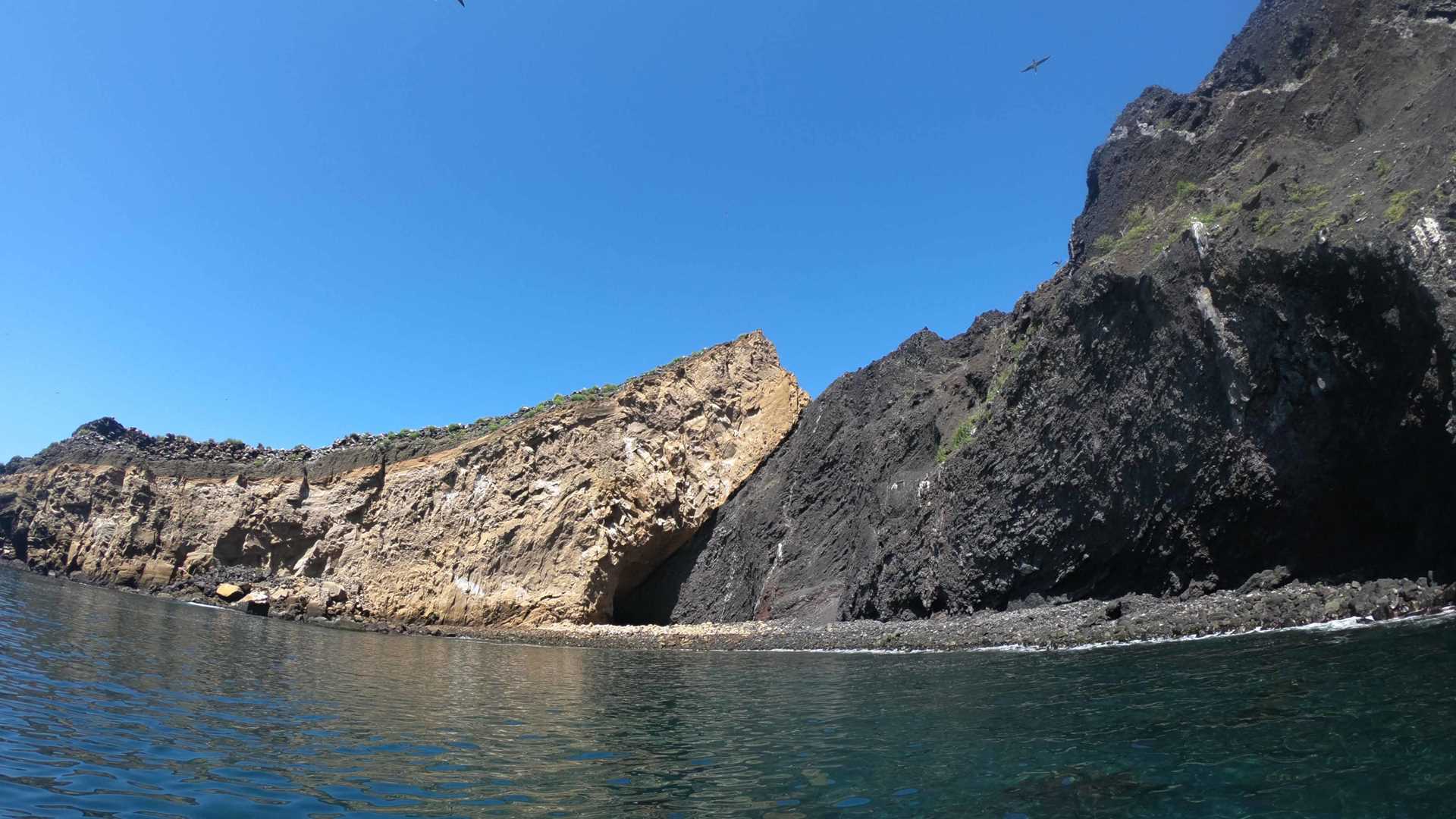This morning National Geographic Islander crossed the equator as we sailed to Punta Vicente Roca. The western part of the archipelago is colder than the central part that we visited yesterday. Our first outing took us around volcano Ecuador, one of the six volcanoes that are part of the largest island of the Galapagos, Isabela.
Colder, nutrient-rich waters bring nutrients that fuel primary productivity. Marine algae is very abundant, and this supports a higher biomass of marine herbivores and carnivores. We saw dozens of sea turtles underwater feeding on algae as well as a few penguins and flightless cormorants and many different types of fish. Many of the species we saw are unique to this part of the archipelago, including the sunfish and the harlequin wrasse.
In the afternoon, we visited Punta Espinosa. Many marine iguanas were resting on land at high tide. We also observed a few flightless cormorants drying their modified wings. We also saw lava cactuses forming, extending patches on top of lava fields. We went back to the ship at sunset and this was the best way to end a wonderful day of exploration.







